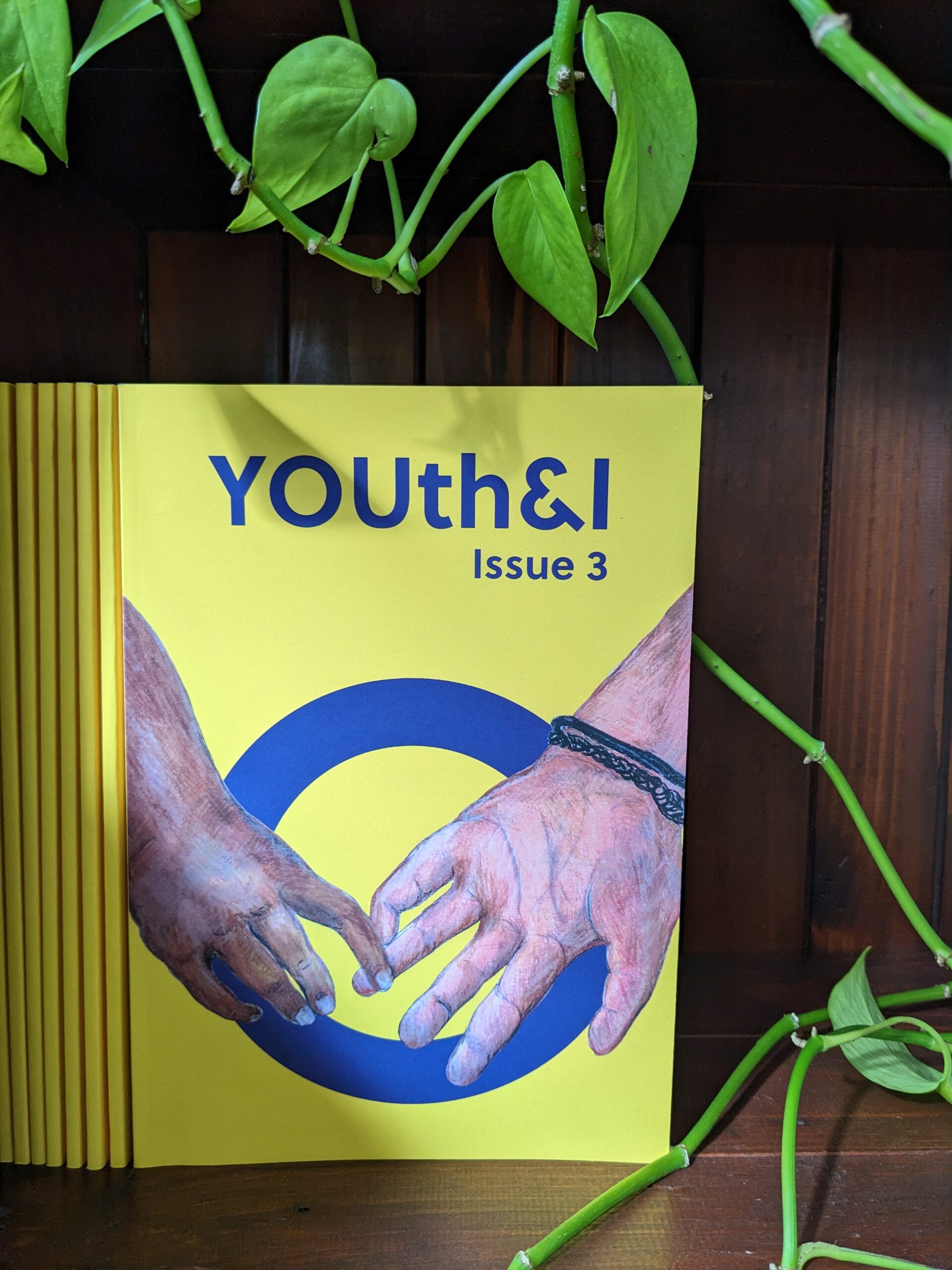
Steph Lum and Georgia Andrews
YOUth&I is a project by and for young intersex people. It is a publication of stories, poems and artwork reflecting on moments in our lives.
Intersex people—people born with variations in sex characteristics—are often made to feel different. When our physical differences become known, we often feel like we can’t talk about it or are told not to talk about it. Our bodies are seen as too different, too unusual—so, for some of us, we are made into someone else’s idea of ‘normal’, with surgical or hormonal interventions that can make us feel alien to ourselves. During this process, we are often not told that there are other people just like us.
And yet, there are many intersex people and many intersex communities. Afterall, there is no one kind of intersex person. Our bodies are all so different and our experiences with families, doctors and the communities we live in are diverse. Nevertheless, we often face similar challenges in learning about our bodies, what options we have ahead of us, and connecting with other intersex people and with ourselves.
YOUth&I Issue 3 centres on this theme of ‘connection’. We live in societies that are still so far from understanding what it means to have a variation in sex characteristics, let alone accept and celebrate our variations. In this isolation and uncertainty, what does it mean for us to live with and love our bodies and ourselves? How do we even begin to find and connect with other people when we are often disconnected from the language to even know other people like us exist, and when we are often told (explicitly or implicitly) never to talk about our own experiences? In Issue 3, we explore what finding and making connection means for us—both (dis)connection with ourselves, and finding connection with families, friends and an intersex community.
Connection with ourselves is something many of us strive for to make sense of who we are and what has happened to us. For some of us, this is ongoing work that can seem out of reach. On most days, my body and I live side by side – Aude Nasr. The pieces in this issue explore the difficulties in understanding what has happened to us and learning to make peace with how our bodies are and how we are treated. I think the challenge now is for me to draw all the fragmented parts of myself into a coherent whole – Aisling Arnould. For many, part of this process involves finding other intersex people.
Finding an intersex community to connect with can be challenging. In many countries, there are no openly intersex people, and in others just a small handful. It is difficult to connect with a group of people if you don’t even know they exist. I somehow had a deep feeling of knowing that somewhere in the world there would be someone else who was just like me—just as different, just as diverse – Bea Is. Knowing other intersex people exist isn’t always enough to find them. While many of us find and connect with each other online, the impact of COVID-19 remains with us and continues to make it challenging for individuals to meet up in person. In Australia, connection with any form of intersex community has remained online during this period. This has offered opportunities for people to find each other but the lack of in person spaces has limited the closeness of connection that physicality can bring. Nevertheless, these stories show the importance of finding space together, be it virtually or in person, and the considerable positive influence that intersex organisations around the world have in bringing people together. I make it a point to value the connections that I have rather than the absences, and that is what has brought me to where I am today – Lee.
This issue continues YOUth&I’s work in reaching out to as many young intersex people as possible. We have continued to translate pieces written in any language we receive and publish the original text alongside its translation. Where possible, we have sought to engage intersex translators in this work. This issue again sees pieces from every region of the world and we extend our great thanks to our translators who have helped us make this possible. We also thank Intersex Human Rights Australia for continuing to auspice and provide funding for this project. And of course, we thank our young contributors—thank you for your honesty, vulnerability and strength in sharing personal moments, difficult moments and moments of great change and growth in your lives. Issue 3 is a reflection on the power of connection and community but, above all, it is a celebration of the uniqueness, diversity and strength of all of you.